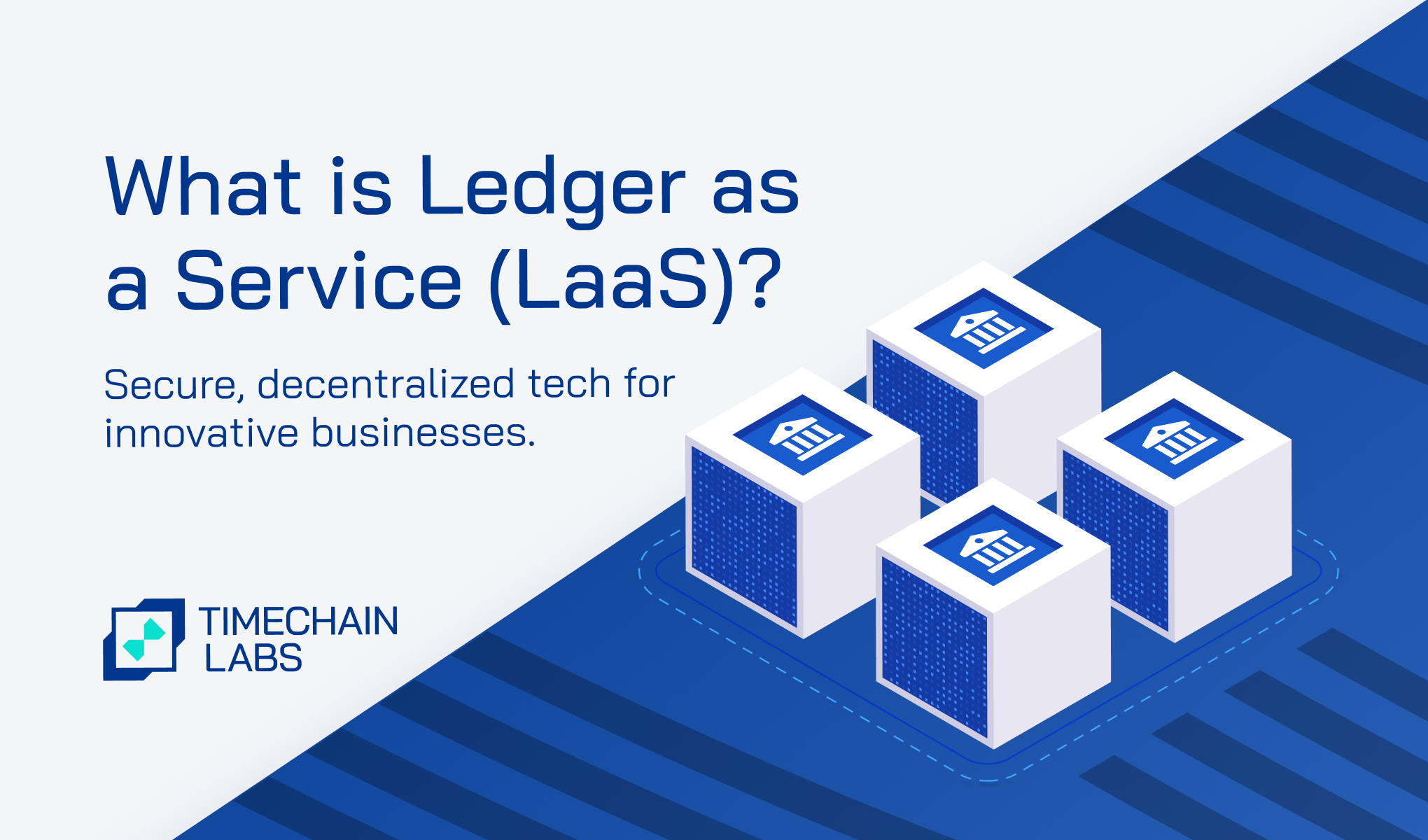Blockchain technology has emerged as a transformative force in the dynamic world of modern business and finance. According to a report by Statista, investments in blockchain solutions are predicted to reach up to $19 billion by 2024.
Blockchain is redefining the way we conceptualize and manage digital transactions. At the heart of this innovation is the concept of Ledger as a Service (LaaS). It offers organizations a secure, decentralized, and transparent means of recording and verifying transactions.
Blockchain, as a distributed ledger technology, operates on a peer-to-peer network where each participant maintains a copy of the ledger. This ensures a transparent and tamper-resistant record of transactions and fosters a high level of trust among participants. In this blog, we will delve deeper into the concept of ledger as a service and its key components.
What is Ledger as a Service?
Ledger as a Service enables businesses to utilize blockchain infrastructure without the complexities of managing and maintaining their own blockchain networks. This approach proves advantageous for organizations seeking a streamlined and cost-effective solution to implement blockchain technology.
In 2023, the market size for distributed ledger accounted for around $3.44 billion. The same is expected to touch the mark of up to $103.15 billion by 2030, with a CAGR of 62.55% during the forecast period.
One notable evolution in the LaaS is the consortium ledger service. This service model brings together multiple entities or organizations to collaborate on a shared blockchain network. By forming a consortium, participants can collectively manage and validate transactions. It helps nurture a collaborative ecosystem while maintaining blockchain technology's decentralized and secure nature.
The consortium ledger service allows organizations to pool resources, share infrastructure costs, and collectively govern the blockchain network. This joint approach enhances efficiency, transparency, and interoperability. It makes it an appealing choice for finance, supply chain, and healthcare industries, where trust and traceability are paramount.
Core Components of the Ledger as a Service Technology
Ledger as a Service technology represents a paradigm shift in how organizations approach data management. Here are the crucial components that constitute LaaS to revolutionize the landscape of digital transactions and data governance.
1. Subledgers
A sub-ledger is a decentralized and supplementary ledger that maintains detailed information about specific subsets of transactions or entities. Instead of having all transaction data stored in a single ledger, sub-ledgers enable the segregation of information for more efficient management and scalability.
For instance, there could be sub-ledgers for different types of transactions, such as customer transactions, supplier transactions, or specific business processes. Each sub-ledger would record the detailed information related to its designated category, contributing to the traceability of the ledger system.
2. Permissioned Subledger
A permissioned sub-ledger involves restricting access to specific sub-ledgers based on predefined permissions and roles. Blockchain networks in enterprise settings often implement permissioned systems. It assists them in controlling who can participate in the network and who can access certain types of data.
In a permissioned sub-ledger scenario, access control is managed through cryptographic keys and smart contracts. Participants are granted permissions based on their roles within the organization. These permissions determine what actions they can perform on the sub-ledger. The following are two essential pillars of permissioned sub-ledger:
- Role-Based Access Control (RBAC): This method of access control restricts system access to authorized users. RBAC is used for managing and controlling the access rights of participants based on their roles within the organization. In RBAC, participants are assigned specific roles, such as administrator, auditor, or supplier. Each role comes with specific permissions that define the actions a participant with that role can perform within the permission sub-ledger. Permissions can include viewing specific data, updating records, or performing other actions within the sub-ledger.
- Overlay Networks: They refer to additional networks created on top of an existing network infrastructure. Overlay networks can provide an additional layer of privacy by segregating specific subsets of participants and transactions. They allow for customization based on the certain requirements of the permissioned sub-ledger.
Overlay networks can contribute to scalability by creating specialized networks for specific purposes. It manages the flow of transactions more efficiently and reduces the overall load on the main permission sub-ledger network.
The Summary
Distributed or consortium ledgers utilize distributed consensus mechanisms, ensuring data integrity and security. Consortium ledgers reduce the risk of a single point of failure by decentralizing control across a network of participants. It raises trust among stakeholders, facilitates transparent transactions, and enhances the efficiency of global data management. This makes LaaS, particularly consortium ledgers, a valuable solution for various industries and applications.
References
https://www.nextmsc.com/report/distributed-ledger-market
https://bootcamp.berkeley.edu/blog/blockchain-use-cases/
https://www.statista.com/statistics/800426/worldwide-blockchain-solutions-spending/
https://www.fortunebusinessinsights.com/industry-reports/blockchain-market-100072
https://papers.ssrn.com/sol3/papers.cfm
https://www.twingate.com/blog/role-based-access-control
https://devopstales.github.io/home/kubernetes-networking-2/
